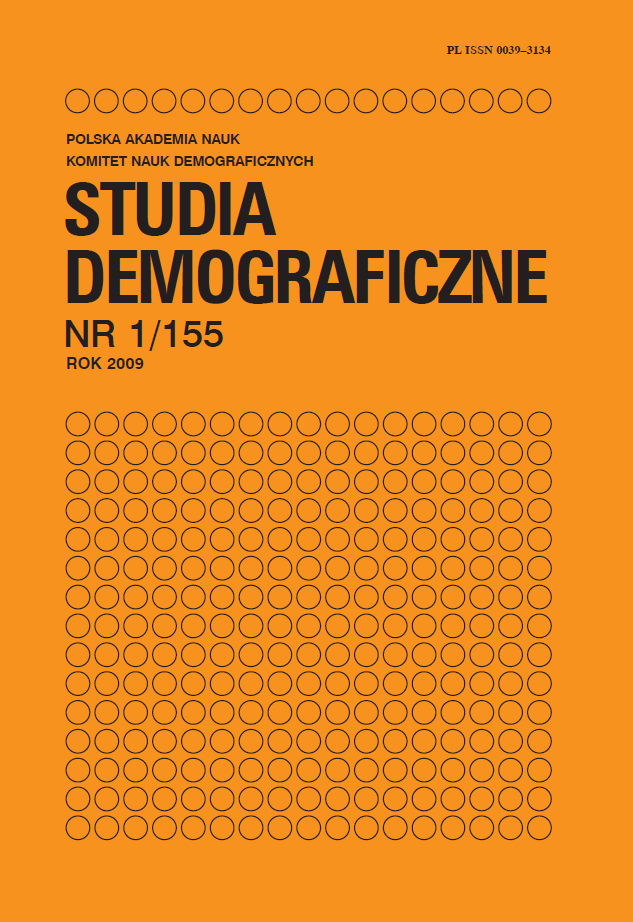Cohort and period fertility of Polish women, 1945-2008
Main Article Content
Abstract
In the article, changes in the reproductive behaviour in Poland, especially after 1989, are discussed in terms of both cohort and period measures of fertility. The article consists of two complementary parts. The first part essentially replicates cohort analyses published by Holzer and Holzer-Zelazewska (1997) with an extension to women's cohorts born in 1946-1990, who themselves gave birth in the years 1961-2008. The new data used in the analysis comes from the registration of births for the years 1985-2008, provided by the Central Statistical Office in Warsaw. The analysis includes age-specific cohort fertility rates (for cohorts born in 1946-1985), as well as the total cohort fertility rates.
The second part of the paper adds a period perspective to the analysis of fertility changes in Poland after 1989. Here, focus is on the period total fertility rate, fertility rates by parity, and age-specific fertility rates. Moreover, using the Bongaarts-Feeney adjustment (Bongaarts and Feeney, 1998), attempt is made to account for changes in the TFR related to quantum and tempo effects.
Profound changes, both in cohort and period fertility rates after 1989, were found to be mostly resulting from the decrease in the quantum (reduction of higher order births), and to a smaller extent were affected by the tempo, which was manifested by a slow, but persistent increase in the age at birth of the first child. Recent upward changes, both in cohort and period fertility, result from the recuperation effect shown by an increased intensity of births among large cohorts born from the mid-1970s to the mid-1980s. Yet, it is still improbable that contemporary cohorts will attain completed fertility, high enough to guarantee the replacement of generations.
Article Details
References
[2] Frejka T., Sardon J-P., 2006, First birth trends in developed countries: Persisting parenthood postponemen, "Demographic Research" 15(6): 147-180; http://www.demographic-research.org.
[3] Frejka T., Sardon J-P., 2007, Cohort birth order, parity progression ratio and parity distribution trends in developed countries, "Demographic Research" 16(11): 315-374; http://www.demographic-research. org.
[4] Holzer J. Z., Holzer-Żelażewska D., 1997, Płodność kohortowa kobiet w Polsce w latach 1945-1994, "Studia Demograficzne", 2(128): 3-23.
[5] van Imhoff E., Keilman N., 2000, On the Quantum and Tempo of Fertility: Comment, "Population and Development Review", 26(3): 549-553.
[6] Kohler H-P., Ortega J-A., 2002a, Tempo-Adjusted Period Parity Progression Measures: Assessing the Implications of Delayed Childbearing for Cohort Fertility in Sweden, the Netherlands and Spain, "Demographic Research" 6(7): 145-190.
[7] Kohler H-P., Ortega J-A., 2002b, Tempo-Adjusted Period Parity Progression Measures, Fertility Postponement and Completed Cohort Fertility, "Demographic Research", 6(6): 91-144; http://www. demographic-research.org.
[8] Kohler H-P., Philipov D., 2001, Variance Effects in the Bongaarts-Feeney Formula, "Demography", 38(1): 1-16.
[9] Ortega J-A., Kohler H-P., 2002, Measuring Low Fertility: Rethinking Demographic Methods, MPIDR Working Paper 2002-001, Max Planck Institute for Demographic Research, Rostock; http://www. demogr.mpg.de
